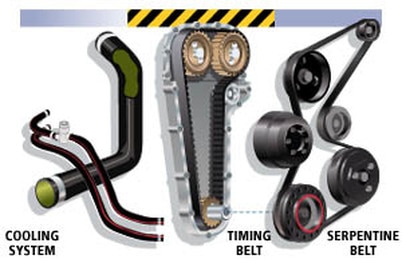 Yep, it is already that time of year again! Can you believe it?! I can't! With the first day of Spring behind us and sunny days ahead, many of us will start our "spring cleaning." Usually this pertains to our homes; cleaning the blinds, vacuuming under appliances and furniture, flipping mattresses, etc. It's also a great time to "spring clean" your vehicle too! Even though we here in San Diego do not see much snow, your vehicle will appreciate a good cleaning. From the exterior body of the car to the floor mats, every nook and cranny needs a good cleaning. Below we have compiled a list of area's you should definitely pay attention too: 10. Clean under the floor mats 9. Wash the headlights and taillights 8. Check tire tread and condition 7. Clean out the trunk/hatch 6. Check under the seats (moving them forward and backward) 5. Wash and wax the vehicles exterior 4. Hit the seats and fabric areas with a vacuum 3. Clean all the mirrors (side mirrors and rear view mirror) 2. Lift up the hood, check for debris and dirt that could lead to problems 1. Clean under the whole car (best way to prevent rust) Happy Spring from your friendly neighborhood mechanic!
0 Comments
 Most hose manufacturers recommend replacing hoses every four years. V-belts should be replaced every three years or 36,000 miles. The incidence of failure rises sharply after the fourth year for service for hoses and the third year for belts. The lifespan of a typical serpentine belt is about five years or 50,000 miles. Serpentine belts are thinner and more flexible than V-belts. They run cooler and last longer, but cost twice as much to replace. The hard part is convincing customers to change belts and hoses as preventative maintenance BEFORE THEY FAIL. Few people do, yet they could save themselves a lot on unnecessary grief and expense if they would. Rubber hoses deteriorate with age. Tiny cracks develop in the rubber which eventually cause hoses to split, blister or leak. Oil contamination and atmospheric ozone can accelerate the process. Engine vibration and motion can cause hoses to wear if they are too short or rub against other parts. This applies to fuel, vacuum and emission hoses as well as coolant hoses. A visual inspection will often uncover bad hoses. Pinching hoses to check for age cracks, brittleness or mushiness can also help locate hoses that need to be changed. This pinching is to be done before the vehicle is started or warmed up. However, neither technique will reveal all the hoses that might need replacing because hoses wear as much from the inside out as they do from the outside in. A hose that appears okay on the outside may actually be on the verge of failure because of internal deterioration. With belts, heat and mileage are the main causes of wear. Every time a belt passes around a pulley, it bends and flexes. This produces heat which hardens the rubber over time. The wear process is greatly accelerated if the belt is loose and slips. A belt may appear to be like new on the outside, yet be on the verge of failure because of weakened separated cords inside. When a belt is replaced, it is important that the belt be properly tensioned. If too loose, it will slip and wear quickly. If too tight, it may damage internal cords as well as overload shaft bearing on accessories it drives. |
Categories
All
Archives
January 2020
|
The Dyno Shop
10042 Prospect Ave, Santee, CA 92071
(619) 562-3933
Business hours:
Monday through Friday, 8:00 am - 5:00pm*
Closed on Holidays
EZ Auto Registration hours:
Monday through Friday, 8:00 am – 5:00 pm*
Closed on Holidays
*Closed from 11:30 am to 12:30 pm daily - but we will be answering the phone :)
Thank you for your continued patronage!
10042 Prospect Ave, Santee, CA 92071
(619) 562-3933
Business hours:
Monday through Friday, 8:00 am - 5:00pm*
Closed on Holidays
EZ Auto Registration hours:
Monday through Friday, 8:00 am – 5:00 pm*
Closed on Holidays
*Closed from 11:30 am to 12:30 pm daily - but we will be answering the phone :)
Thank you for your continued patronage!
Powered by Benchmark Email
© 2017 The Dyno Shop

 RSS Feed
RSS Feed


